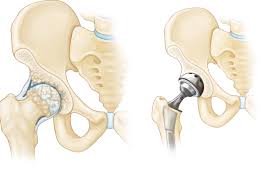Joint replacement implants are crucial components used in orthopedic surgery to restore function and alleviate pain in patients suffering from severe joint diseases such as osteoarthritis or rheumatoid arthritis. These implants are made from various materials, each with its own characteristics and suitability depending on the patient’s specific needs and conditions. Here’s an overview of the different types of materials used for joint replacement implants and how they are selected for each patient:
Types of Materials Used for Joint Replacement Implants:
- Metal Alloys (Cobalt-Chromium, Titanium):
- Cobalt-Chromium: Known for its durability and resistance to wear, cobalt-chromium alloys are commonly used in joint replacement implants, especially for hip and knee replacements. They provide good mechanical strength and stability.
- Titanium: This metal is valued for its biocompatibility, corrosion resistance, and lightweight nature. Titanium implants are often used in patients with metal allergies or sensitivities.
2. Ceramics:
- Alumina: Ceramic materials such as alumina are extremely hard and wear-resistant. They are commonly used in hip joint replacements. Alumina implants have low friction properties, reducing wear on the opposing joint surfaces.
- Zirconia: Another ceramic material, zirconia, is also used in joint replacements. It offers excellent biocompatibility and low wear rates, making it suitable for both hip and knee implants.
3. Polyethylene:
- High-density polyethylene (HDPE) is a type of plastic used as a bearing surface in joint replacements, particularly in hip and knee implants. It provides low friction and wear characteristics when coupled with metal or ceramic components.
4. Biological Materials:
- Some newer implants incorporate biological materials or coatings to promote better integration with the patient’s bone tissue. Examples include implants with hydroxyapatite coatings or those designed to facilitate bone ingrowth.
Selection Criteria for Choosing the Most Appropriate Implant Material:
- Patient Factors:
- Age and Activity Level: Younger, more active patients may benefit from materials with higher durability and wear resistance (e.g., metal alloys or ceramics).
- Bone Quality: Patients with poor bone quality may require implants that encourage bone ingrowth or have coatings that promote osseointegration.
2. Allergies and Sensitivities:
- Some patients may have allergies or sensitivities to certain metals (like nickel in cobalt-chromium alloys). In such cases, titanium or ceramic implants may be preferred.
3. Implant Location:
- The choice of material may vary depending on the joint being replaced. For example, ceramic materials are often preferred for hip implants due to their low wear rates, whereas polyethylene is commonly used in knee replacements.
4. Surgeon Preference and Experience:
- Surgeons may have preferences based on their experience and familiarity with certain implant materials and designs.
5. Long-Term Performance and Revision Considerations:
- The expected longevity and potential for revision surgery should also be considered. Some materials may have better long-term performance or be easier to revise if necessary.
Conclusion:
Selecting the most appropriate material for joint replacement implants involves a thorough assessment of the patient’s individual characteristics, the specific joint being replaced, and the desired long-term outcomes. Advances in materials science continue to expand the options available, allowing orthopedic surgeons to tailor treatment plans to meet each patient’s unique needs effectively.






Comments